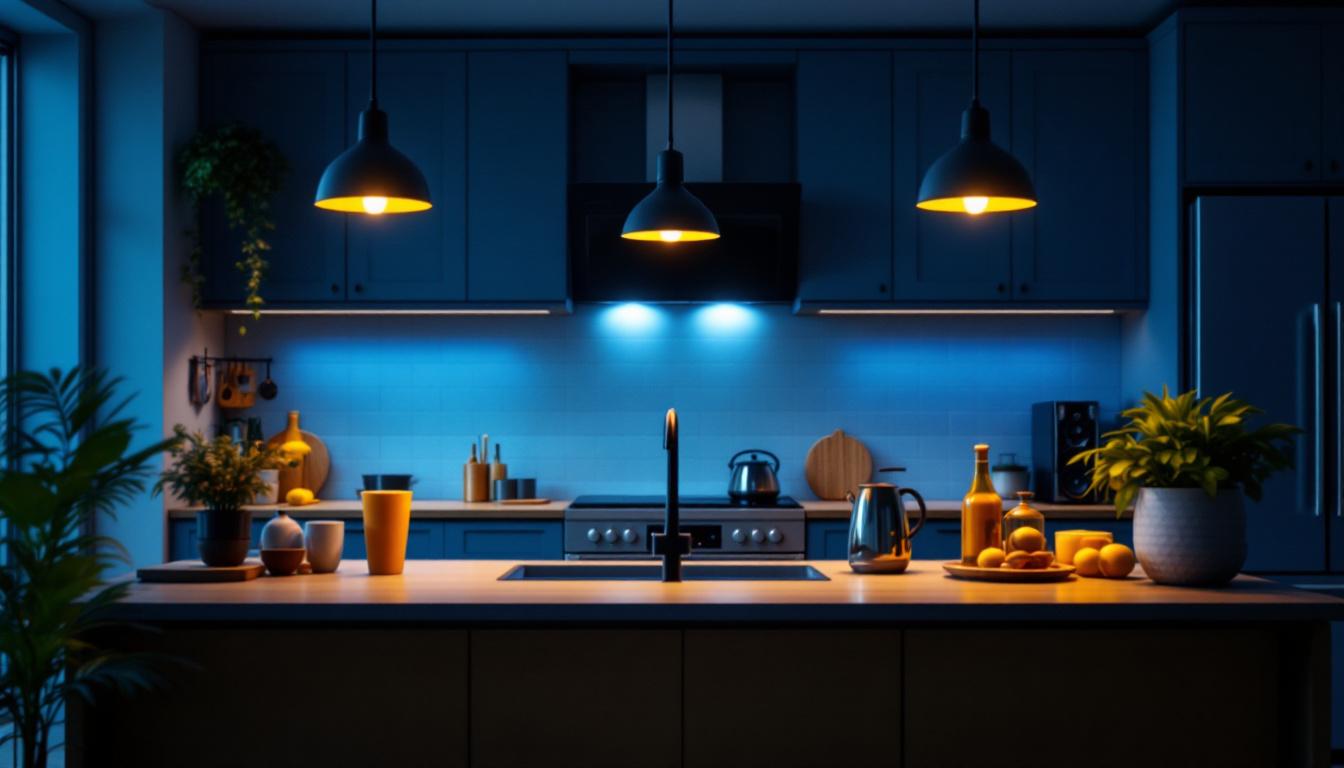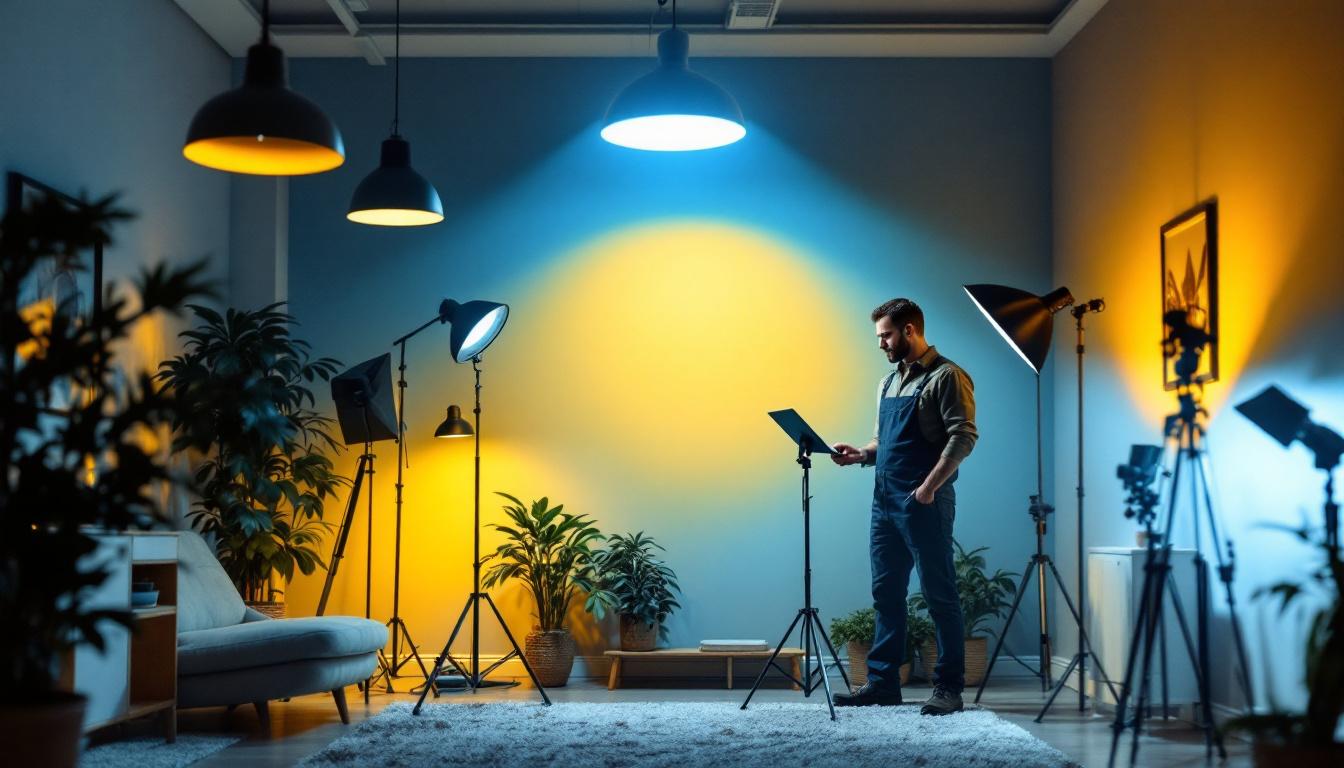
The kitchen island has become a central feature in modern homes, serving not just as a functional workspace but also as a social hub. For lighting contractors, understanding how to effectively illuminate this space can enhance its utility and aesthetic appeal. This article explores innovative hacks for lighting kitchen islands, helping contractors elevate their projects and satisfy their clients.
Proper lighting in a kitchen island is crucial for both functionality and ambiance. A well-lit island can transform the cooking experience, making it safer and more enjoyable. Moreover, it can serve as a focal point that enhances the overall design of the kitchen.
Lighting contractors must consider the various activities that occur around the kitchen island, such as meal preparation, dining, and socializing. Each of these activities requires different lighting solutions to create an inviting and practical environment. For example, during meal prep, bright, focused lighting is essential to ensure safety while chopping vegetables or handling sharp knives, while softer lighting may be more appropriate for evening gatherings where the goal is to create a cozy atmosphere.
When planning lighting for a kitchen island, it’s essential to strike a balance between functional and aesthetic lighting. Functional lighting ensures that the workspace is adequately illuminated, while aesthetic lighting adds character and warmth to the space. The right combination can elevate the kitchen from a purely functional area to a stylish hub of activity.
Task lighting, such as pendant lights or under-cabinet fixtures, can provide the necessary illumination for cooking and preparing meals. On the other hand, decorative fixtures can enhance the island’s design, making it a statement piece in the kitchen. Choosing fixtures that complement the overall kitchen decor can tie the room together, whether opting for sleek, modern designs or rustic, vintage-inspired pieces. Additionally, dimmable options can allow homeowners to adjust the lighting based on the time of day or the mood they wish to create, further enhancing the island’s versatility.
Layering light is a fundamental principle in interior lighting design. For kitchen islands, this means combining ambient, task, and accent lighting to create a well-rounded illumination scheme. Ambient lighting provides overall illumination, while task lighting focuses on specific areas. Accent lighting can highlight architectural features or decorative elements, adding depth and interest to the space.
For instance, installing recessed lights in the ceiling can provide ambient light, while pendant lights hung above the island can serve as task lighting. Additionally, LED strip lights under the countertop can add an elegant touch and create a warm glow during evening gatherings. This layered approach not only enhances the functionality of the kitchen island but also allows for creative expression. Homeowners can experiment with different color temperatures and light intensities to achieve the desired mood, whether it’s bright and energetic during meal prep or soft and inviting for late-night conversations over a glass of wine. Furthermore, incorporating smart lighting solutions can offer even greater flexibility, allowing users to control their lighting preferences with ease, adapting to their lifestyle and needs in real-time.
The selection of fixtures plays a pivotal role in the effectiveness of kitchen island lighting. Contractors should consider various factors, including style, size, and functionality, when recommending fixtures to clients.
Choosing the right size of fixtures is essential for achieving a balanced look. Oversized fixtures can overwhelm a small island, while tiny fixtures may get lost in a larger space. A general rule of thumb is to select fixtures that are about one-third the width of the island.
Moreover, the height at which fixtures are hung is equally important. Pendant lights should be positioned approximately 30 to 36 inches above the countertop to provide optimal illumination without obstructing sight lines.
The style of the fixtures should complement the overall design of the kitchen. Whether the kitchen features a modern, rustic, or traditional aesthetic, the lighting fixtures should harmonize with other design elements.
For a contemporary kitchen, sleek pendant lights with clean lines may be ideal, while a farmhouse-style kitchen might benefit from vintage-inspired fixtures. Additionally, the finish of the fixtures, such as matte black, brushed nickel, or polished brass, can significantly impact the overall look.
As technology continues to evolve, smart lighting solutions have gained popularity in residential settings. For lighting contractors, integrating smart technology into kitchen island lighting can provide clients with enhanced control and convenience.
Smart lighting systems allow homeowners to control their lighting through mobile apps or voice commands, providing flexibility and customization. This technology can be particularly beneficial in a kitchen setting, where lighting needs may change throughout the day.
For example, homeowners can adjust the brightness of the island lights for cooking during the day and create a softer ambiance for evening gatherings. Additionally, smart lighting can be programmed to follow a schedule, automatically adjusting based on the time of day.
Integrating kitchen island lighting with other smart home devices can enhance the overall functionality of the space. For instance, syncing the lights with smart thermostats or security systems can create a cohesive smart home experience.
Lighting contractors should consider recommending systems that are compatible with popular smart home platforms, ensuring that clients can easily integrate their lighting with existing devices. This not only adds value to the project but also positions contractors as knowledgeable professionals in the evolving landscape of home automation.
In today’s environmentally conscious world, energy efficiency and sustainability are paramount considerations for lighting contractors. Choosing energy-efficient lighting solutions can significantly reduce energy consumption and lower utility bills for homeowners.
LED lights are a popular choice for kitchen island lighting due to their energy efficiency and long lifespan. Unlike traditional incandescent bulbs, LEDs consume significantly less energy and produce less heat, making them a safer option for kitchen environments.
Additionally, LEDs are available in various color temperatures, allowing homeowners to select the perfect hue to enhance their kitchen’s ambiance. Warm white LEDs can create a cozy atmosphere, while cool white options provide a more modern, crisp look.
Incorporating natural light into kitchen island designs can further enhance energy efficiency. Contractors should consider the placement of windows and skylights to maximize daylight exposure, reducing the need for artificial lighting during the day.
Strategically positioned windows can also create a connection between the indoor and outdoor spaces, making the kitchen feel more open and inviting. This approach not only benefits energy consumption but also contributes to the overall well-being of the occupants.
Successful installation of kitchen island lighting requires careful planning and execution. Lighting contractors should follow best practices to ensure that the fixtures are installed correctly and function effectively.
Before installing any lighting fixtures, it is crucial to assess the electrical requirements of the space. Contractors should ensure that the existing wiring can support the new fixtures and that all installations comply with local building codes.
Additionally, using dimmer switches can enhance the versatility of the lighting, allowing homeowners to adjust brightness levels based on their needs. This feature can be particularly valuable in a kitchen setting, where lighting requirements may vary throughout the day.
After installation, it is essential to test the lighting to ensure it meets the desired functionality and aesthetic. Contractors should encourage clients to evaluate the lighting at different times of day to determine if any adjustments are necessary.
Making small adjustments, such as changing the height of pendant lights or modifying the angle of recessed lights, can significantly impact the overall effectiveness of the lighting design. Ensuring client satisfaction is paramount, and taking the time to make these adjustments can lead to positive referrals and repeat business.
Staying updated on the latest trends in kitchen island lighting can give contractors a competitive edge. Understanding current design preferences and technological advancements can help contractors provide informed recommendations to clients.
Industrial and minimalist lighting designs have gained popularity in recent years. These styles often feature raw materials, such as metal and glass, combined with simple shapes and clean lines. For kitchen islands, contractors can recommend fixtures that embody these trends, creating a modern and stylish look.
Incorporating elements like Edison bulbs or exposed wiring can further enhance the industrial aesthetic, adding character and uniqueness to the kitchen space.
Color and finish trends for lighting fixtures are also evolving. Contractors should be aware of popular finishes, such as matte black, brass, and aged bronze, which can add depth and interest to kitchen island designs.
Moreover, incorporating colored glass or unique shade designs can create a striking visual impact. Contractors should encourage clients to explore various options to find fixtures that resonate with their personal style and complement their kitchen design.
Lighting kitchen islands is an essential aspect of modern kitchen design that requires careful consideration and expertise. By understanding the importance of layered lighting, choosing the right fixtures, and integrating smart technology, lighting contractors can create functional and aesthetically pleasing spaces.
As trends evolve and energy efficiency becomes increasingly important, staying informed and adapting to new technologies will ensure that contractors remain competitive in the industry. By implementing these hacks and best practices, lighting contractors can not only elevate their projects but also enhance the overall experience for homeowners, making the kitchen island a truly inviting and functional centerpiece of the home.
Ready to take your kitchen island lighting projects to the next level? At LumenWholesale, we provide lighting contractors with an exceptional range of high-quality, spec-grade lighting products at the most competitive wholesale prices. Say goodbye to local distributor markups and hello to our curated selection that meets rigorous industry standards. With free shipping on bulk orders, you can trust that you’re getting premium lighting solutions at the best value, with no hidden costs. Elevate your lighting game and create inviting, functional spaces with ease. Discover the perfect blend of quality, affordability, and convenience at LumenWholesale — your go-to source for Wholesale Lighting at the Best Value.

Explore the essential compliance guidelines for surface mount LED lights in this informative article tailored for lighting contractors.

Discover innovative cost-saving strategies for lighting contractors from leading LED light manufacturers.

Discover the ideal lumen levels for illuminating any space and explore the top benefits this knowledge offers to lighting contractors.

Discover expert tips and proven strategies for lighting contractors to effectively incorporate LED bulbs into lamp designs.